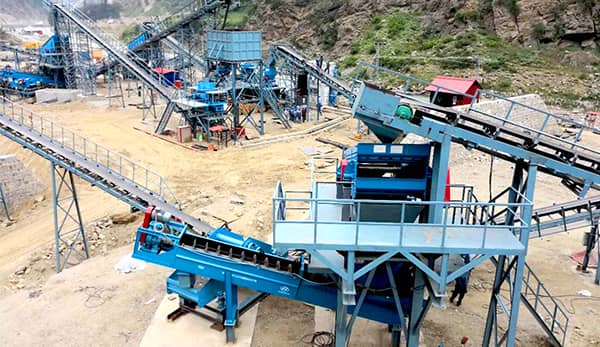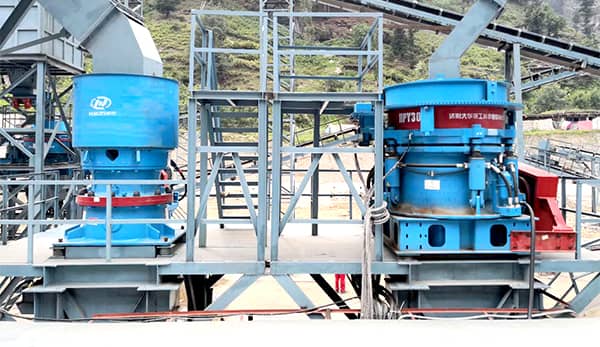Waste Water Treatment Method of Sand and Stone Production Line
author:dahua time:2019-12-13
Stone aggregates production line is a comprehensive production system for stone and sand processing. It has two production process, wet production and dry production. The dry sand production line is often used at arid areas, although it will not produce waste water, the produced mechanism sands content plenty of powder, and impurities. In order to better improve the stone quality, wet stone production has received higher attention in the industry. While in the production process, waste water produced in the process will bring trouble to the customer. How to effectively treat this waste water? Now, we will take the Waste Water Treatment System of 90tph Stone and Sand Production Line in Pakistan as an example to explain.

The harm of improper waste water treatment: During stone and sand production process, the washing and screening waste water contents high concentration suspension solids. If these water are discharged directly without treatment, it will pollute the water, deposit silt in the river,and destroy the water ecological balance.
Traditional waste water treatment method: It includes horizontal sedimentation tank, radial sedimentation tank, inclined tube sedimentation tank, etc., The removal rate of suspended solids is low, covers a large area, mud cleaning is frequent and heavy, and the mud scraping machinery is prone to failure.
Luoyang Dahua adopts the new processing technology of "fine sand recovery device + deep cone concentrator mold + chamber pressure filter". It mainly includes sand recovery machine, catchment tank, wastewater lifting pump station, efficient deep cone thickener, mechanical dehydration workshop, clear water tank, water pressurizing pump station, and dosing room, etc., with total water treatment amount of 120m³/h and mud amount of 6.93t/h.
Production process and advantage of Luoyang Dahua waste water treatment method:
The waste water is collected to fine sand recovery device through catchment tank. Part of the stone powder was recovered to finished product area, and the rest of stone powder enter into the deep cone thickener along with the waste water. The treated stone powder is precipitated to the cone of the thickener, and then was raised to the filter press through the slurry pump for dehydration treatment. The supernatant is collected by the overflow weir of the thickener to the clear pond for recycling. The system reduces the floor area, increases the removal rate of suspended solids, saves power consumption, reduces maintenance cost, and facilitates management. It realizes the recycling of sand and gravel wastewater and achieves the environmental protection requirement of "zero discharge" of wastewater.
Previous Article:How to maintain Sand Making Machine in Winter?
Next Article: How much does Road Stone Mobile Crusher cost?



